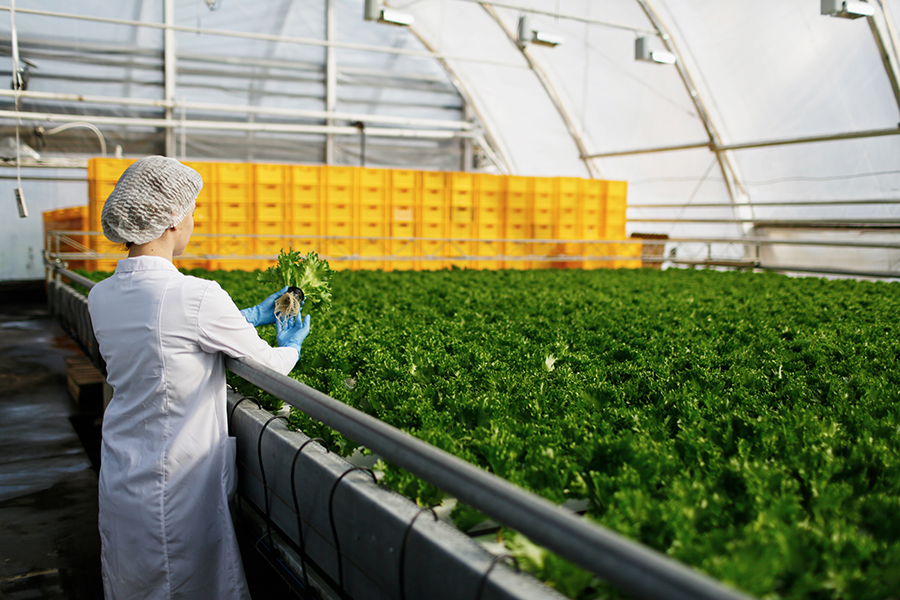An enormous amount of food goes to waste in the US and around the world while millions of people suffer food insecurity. The impact of food waste also has serious ramifications for the environment and on businesses’ sustainability goals and profitability, posing unprecedented challenges.
In a recent landmark report titled Overcoming the Food Waste Challenge: Improving Profit While Doing Good, Coresight Research focused on food waste occurring at grocery retailers. The report provides key data and details on an industry-wide mission to eliminate food waste that paints a portrait of sustainability leadership. Coresight is a respected source of retail industry data with a mission to accelerate innovation and growth. According to the report, not only does edible food waste reduce grocery retailers’ profitability, but it negatively impacts the environment, occupying space in landfills and generating carbon and greenhouse gas emissions.
The Coresight Report draws a clear line in the sand for the food industry: “Disposing of huge amounts of edible food in landfills seems irresponsible and shameful in a time when there is massive food insecurity in the US and around the world, which has likely increased during the pandemic.” The report declared that getting a better handle on food waste would enable grocery retailers to ‘do good by doing well’—i.e., meeting commitments around sustainability and social responsibility while also improving profitability. However, much of this waste can be avoided through the use of technology.
Technology exists to address overproduction and overordering, which are the main causes of food waste, according to survey respondents. This could be mitigated with more accurate forecasting and AI-driven demand forecasting/planning is in fact, the top area for planned future investment. Specifically, software platforms like atma.io connected product cloud use artificial intelligence and machine learning to analyze and alert on anomalies and inefficiencies across the supply chain; helping mitigate the risks, including minimizing spoilage, reducing loss, waste, and greenhouse gas emissions, and in turn maximize sales.
Data Drives Action
Food waste has wide-ranging economic, social, and environmental consequences on a global basis. The United Nations’ Environment Programme estimated that global food waste amounted to 931 million tons in 2021, and a 2011 study (latest available data) by the UN Food and Agriculture Organization estimated that food waste caused a $750 billion economic impact (excluding fish and seafood) and generating 3.3 billion metric tons of CO2e (carbon dioxide equivalents) into the air, and the current figure is likely much higher.
Collecting and getting command of relevant data is a critical precondition for demand forecasting and inventory management. Similar to the quote, “You can’t manage what you can’t measure,” attributed to Peter Drucker, collecting data on items, their location, their state, and inside the store is the essential first step.
Two points stand out in the Coresight survey:
- Enormous loss of revenue-30% of food in U.S. grocery is thrown away, amounting to $21 billion in net income annually
- Additional economic, societal, and environmental costs – the disposal of waste incurs costs and generates carbon emissions; an estimated 50 million Americans will face food insecurity this year
Leading by Example
Food waste has clearly emerged as a key element for sustainability in grocery retail: 90% of respondents in this Coresight survey said reducing food waste is important for reaching their sustainability goals and 72% have set sustainability goals specific to food waste.
Several large US grocers have publicly released their goals for reducing food waste. The Coresight report presented notable examples of corporate leadership below.
- Albertsons committed in 2019 to reduce food waste by 50% in its Pacific Coast divisions by 2030. The company also donates edible fresh and packaged food products that are close to the “use by” date to local food banks.
- Kroger’s “Zero Hunger | Zero Waste” program aims to end hunger in the communities it operates and end food waste by 2025 through innovation, increasing food donation, increasing nutrition, and advocating for changes in public policy to address hunger and divert food from landfills.
- Walmart has set a goal to eliminate food waste in the US, Canada, Japan, and the UK by 2025 as part of its general goal of moving to zero waste in the US and Canada by the same year.
Technology Leadership Responds
Food retailers are addressing the urgency of food waste by adopting available technologies to solve this escalating issue. These technologies include AI-based demand forecasting, RFID and Blockchain to manage inventory and capitalize on the opportunity to improve profits while reducing the costly disposal of edible food into landfills.
In fact, according to the Coresight survey, 84% of grocery retailers plan to invest in technologies over the next two years to manage food waste. The overwhelming consensus among technologists is that digital solutions create efficiencies while driving sustainability.
Accurate data also enables operators to quickly sell items that are nearing their expiry instead of having to discard them. Utilizing this data, they can establish an inventory system that forecasts and tracks food product usage so that it can be offered to customers safely, and not end up as waste.
The call for global sustainability solutions will continue to get even louder. Solving the food-waste problem will likely take a combination of technology, government support. It will also benefit from pressure exerted by investors or environmental activists that holds grocery retailers accountable to their sustainability goals. Leaders across the retail industry can learn from the example being set by its food sector.
You can access the full Coresight research report here.




































